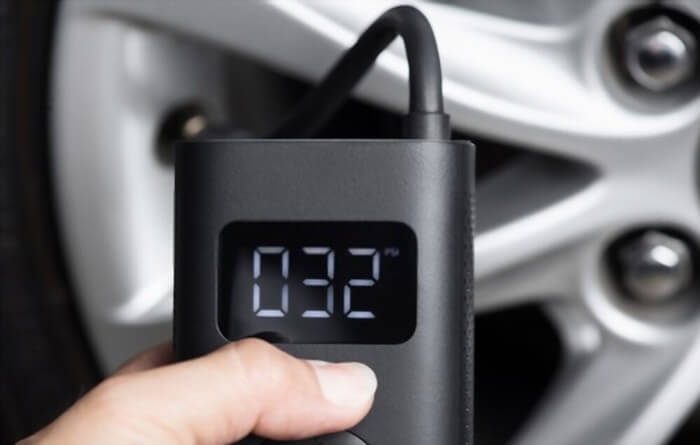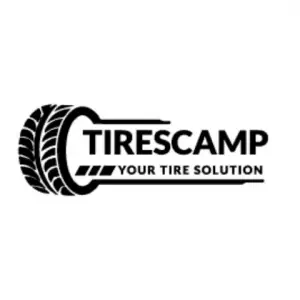It is crucial that your tires are inflated to the proper pressure. This is because tire pressure impacts both tire life and gas mileage.
One of the most frequently asked questions when discussing the right pressure for car tires is,” is it better to have the car tires at 32 PSI OR 34 PSI?”
It is ideal to pump your car tires to the recommended pressure as indicated on your car’s door placard. This is especially true if you are utilizing stock tires.
But that doesn’t mean you can’t try something new.
If your door decal reads “32 PSI,” increasing the pressure by 2 is acceptable. A PSI of 34 will give you a firmer ride, lower rolling resistance, and, thus, enhanced fuel economy.
On the other hand, if the decal on the driver’s door reads “34 PSI,” lowering this pressure by 2 is also acceptable. A PSI of 32 will offer you better road holding and a softer ride than a PSI of 34.
Choosing which PSI is better will depend on your driving requirement and preferences.
What Pressure Should You Use in Your Tires?
The ideal tire pressure is commonly indicated on a label on the inner part of the driver’s door. In other instances, the owner’s guide contains the specifications if there isn’t a sticker on the door.
When the tires are cold, most passenger automobiles advise 32 psi to 35 pressure in the tires. It would help if you examined your car’s tire pressure when its tires are cold because as a tire rolls along the ground, its friction produces heat, increasing the tire temperature and air pressure.
Ensure your vehicle has been resting for at least a few hours to acquire the most accurate reading.
Never fill your tires up to the recommended pressure on the tire. The number on the tire indicates the tire’s maximum allowable pressure and not the suggested pressure for the vehicle.
Driving on underinflated tires can hasten tire wear due to increased friction. On the other hand, driving on overinflated tires can offer you a bumpy ride and a poorly handled automobile. In any case, not inflating your tires to the recommended pressure will have a detrimental impact on vehicle performance and tire wear, as well as your maintenance plan for tire replacement.

How Do You Check Tire Pressure
You should examine your tire pressure frequently to ensure that the tires are well inflated after learning the manufacturer’s optimum tire pressure for your car.
You may check your tires’ pressure at home, the repair shop, petrol stations, and auto part stores. At-home tire pressure checks require:
- A manual or automatic pressure gauge
- Phone or a pen and paper
- An air compressor
Step 1: Ensure the Tires are Cold
If feasible, you should check the tire pressure when the tires are cold because tire pressure significantly changes with temperature. Also, the manufacturer’s recommended tire pressure is cold inflation pressure.
To avoid the friction heat from the previous drive and the daytime temperature rises, it is advised that you check your tire pressure after one night of rest.
Step 2: Use a Gauge to Check the Tire Pressure
Detach the valve cap and firmly press your tire pressure gauge against the valve stem. If the gauge is securely attached to the tire, there ought to be a reading.
Step 3: Write the Readings Down
Write down the tire pressure for each tire and compare it to the recommended psi you read in the instruction manual or inside your car driver’s door. Ensure you read everything carefully because some cars have different suggested pressures for the front and rear tires.
Step 4: Fill the Tires to the Required Pressure
If you discover a tire that needs to be inflated, use the air compressor to inflate them. You can buy or rent air compressors at a petrol station or an auto parts store. To ensure that the reading is correct and the tires are cold, let them rest for at least 30 minutes.
If you must fill your tires while they are hot, fill them to a pressure 3 to 4 psi higher than what is advised, and check them using your gauge after they are cool.
When inflating the tires, it’s acceptable to slightly overinflate them because you may release the air using the gauge.
Step 5: Recheck the Tire Pressure
Use the pressure gauge to monitor the tire pressure again after filling the tires to ensure the pressure is within a safe range. If they are over-inflated, release some air by pressing the gauge firmly against the valve stem.
How Can Proper Tire Inflation Be Maintained?
It is strongly advised that you check the tire pressure each time you inflate a tire, after each temperature change of 10°F (5.6°C), and once every 30 days because proper tire maintenance is crucial to the overall operation of your car.
Remember to check the tire pressure before the TPMS light illuminates because a typical TPMS may:
- Once the tire pressure is severely underinflated, turn on
- Not detect a slow depletion of air
- Not notice overly inflated tires
- Not identify the underinflated tire
Therefore, you are strongly advised to check your tire pressure frequently, especially before a car trip or when traveling with a heavy load.
How Does Tire Pressure Impact Fuel Efficiency
The rolling resistance greatly impacts fuel economy. When tires are under-inflated, their contact patch increases. The increase in contact patch leads to increased rolling resistance harming your fuel economy.
Overinflated tires have no impact on your fuel economy, but it is advisable to keep your tires inflated to the manufacturer’s recommended pressures.
Final Take
We hope this article has answered your question: “is it better to have the car tires at 32 PSI OR 34 PSI?” when it comes to perfect pressure for your car tires, it is better to stick to the manufacturer’s recommended pressures.
